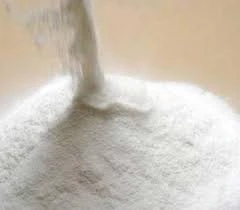RDP for Ceramic Tile Adhesive Enhancing Performance and Versatility
In the realm of construction and interior design, the adhesion of ceramic tiles is a crucial aspect that determines the longevity and durability of tiled surfaces. As the demand for high-quality tiling solutions continues to rise, the use of Redispersible Polymer Powders (RDP) in ceramic tile adhesives has become increasingly prominent. This article explores the significance of RDP in enhancing the performance of tile adhesives, focusing on its benefits and applications.
RDP for Ceramic Tile Adhesive Enhancing Performance and Versatility
Moreover, RDP contributes to improved workability. Tile installers appreciate the smooth application and extended open time that RDP provides, allowing for more efficient project execution. With enhanced workability, installers can reposition tiles more easily and ensure that the adhesive is adequately applied without compromising the bonding strength. This feature is particularly beneficial in large-scale projects where precision and efficiency are paramount.
rdp for ceramic tile adhesive

Another advantage of RDP in ceramic tile adhesives is its ability to improve moisture resistance. Many RDP formulations are designed to offer enhanced water repellency, which is crucial in wet areas such as bathrooms and kitchens. A moisture-resistant adhesive minimizes water infiltration, thereby reducing the risks associated with mold growth and substrate damage. This aspect is particularly significant for maintaining the integrity and aesthetics of tiled surfaces in damp environments.
The versatility of RDP is also worth mentioning. Various RDP products are available to suit different applications and substrates, whether for interior or exterior tiles, porcelain or ceramic materials, or even specialized surfaces like natural stone. This versatility makes RDP a favored choice among manufacturers looking to formulate high-performance tile adhesives that cater to diverse market needs.
Furthermore, the environmental impact of RDP is a consideration that continues to gain attention. Many manufacturers are now opting to use RDP derived from sustainable sources, aligning with the growing trends of eco-friendly construction practices. By incorporating RDP into their products, manufacturers not only enhance performance but also contribute to sustainability in the construction industry.
In conclusion, the incorporation of RDP in ceramic tile adhesives offers a multitude of benefits that enhance both performance and usability. From improved flexibility and adhesion strength to enhanced moisture resistance and workability, RDP has proven to be a valuable additive in the production of tile adhesives. As the construction industry continues to evolve, the use of RDP is likely to expand, making it a critical component in achieving high-quality, durable, and aesthetically pleasing tiled surfaces. For both manufacturers and contractors, understanding and utilizing RDP effectively can lead to superior results in tile installation projects.
-
The Versatility of Industrial Additives: Mhec, Hpmc, And Wall Putty SolutionsNewsMar.28,2025
-
The Importance of HPMC in Modern IndustriesNewsMar.28,2025
-
Partnering with Reliable Manufacturers for Optimal ResultsNewsMar.28,2025
-
Enhancing Construction Performance with Redispersible Polymer PowdersNewsMar.28,2025
-
Enhancing Construction and Household Products with Advanced AdditivesNewsMar.28,2025
-
Building Strong Foundations with Key Construction MaterialsNewsMar.28,2025






